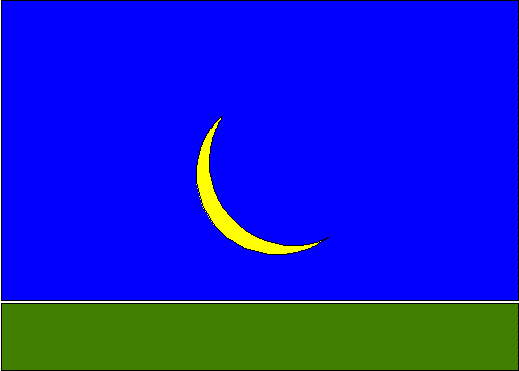
Due: October 24, 1995
1. 
(a) The above picture shows the (almost) new moon just before it sets in the west. What can you say from the picture about where in the world this picture could be taken?
(b) Suppose instead you were told this was a picture of the old moon which has just risen before sunrise. Would that change your mind about where in the world this is? Explain your reasoning.
2. Suppose Venus to be visible in the evening sky after sunset.
(a) Give a rough estimate of the latest (in hours after sunset) that Venus could possibly set.
(b) If Venus is indeed setting at this latest possible time, and you looked at it through a telescope as it was setting, sketch the phase you would expect to see (show the horizon as well).
Reading Assignment: Two New Sciences, page 61 (middle) to page 68. Also, look through the sections in the book (beginning on page 153) on Uniform Motion and Naturally Accelerated Motion, but don't get too hung up on the ancient presentation, just see if you can make any sense of it!
(3) Falling objects: drop various objects in pairs from a height. Try a penny, a quarter, a tennis ball, a ball of paper, etc. Can you detect any significant difference in falling times for different weight objects? Was Aristotle partly right? Does it depend on how far things fall?
(4) Uniform Acceleration: do an experiment in which an object moves down a smooth incline. Possibilities: a ball rolling down a hill, a skateboard, a bicycle if you can keep it straight at low speeds, etc. The idea is to find the distances the object travels in one, two and three seconds, starting from rest, and so make a rough graph of distance against time. It is important to really try to do this, rather than just making up some answer to hand in, because it turns out that acceleration is a really hard concept to grasp, as you will most likely find out!